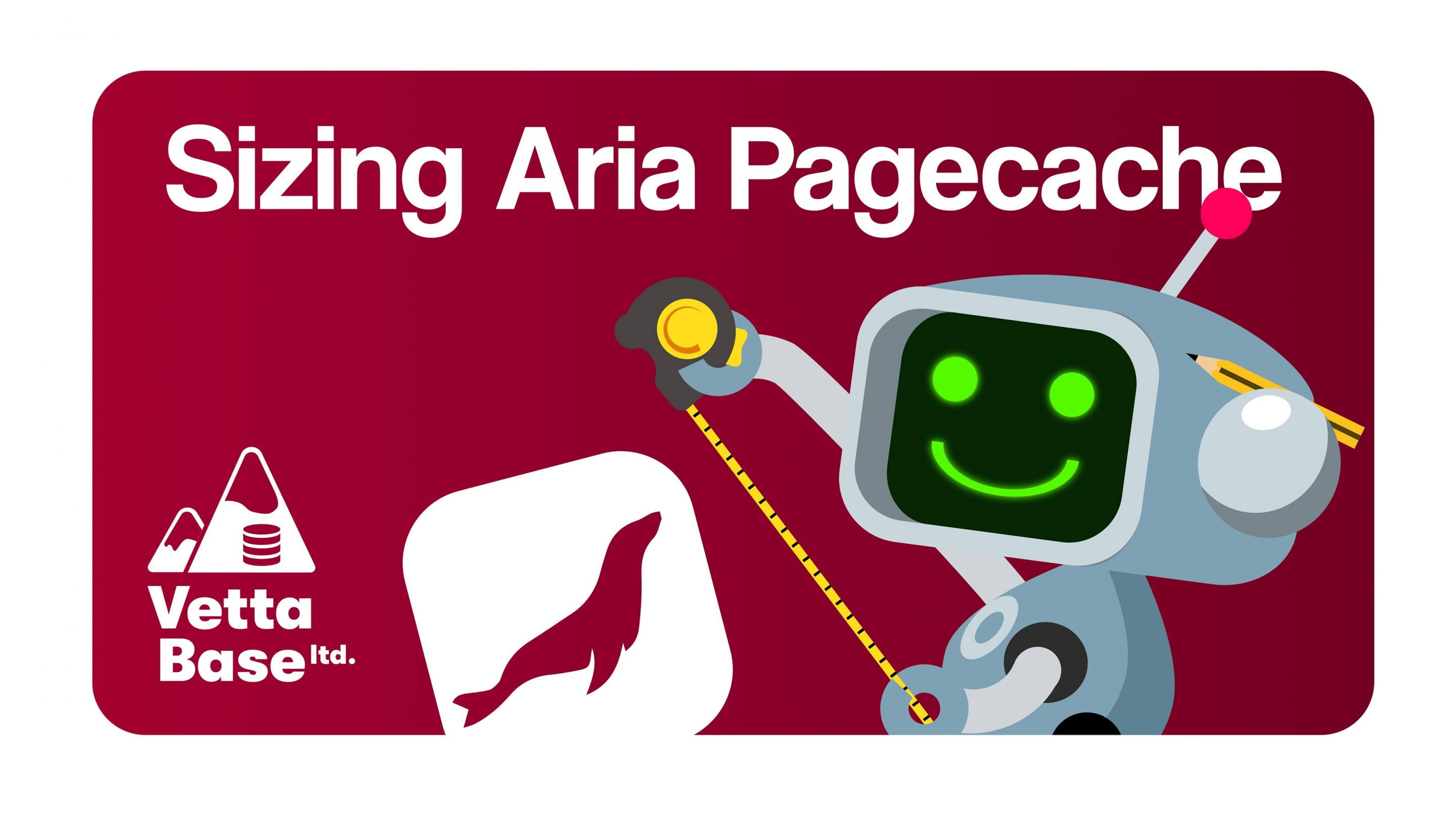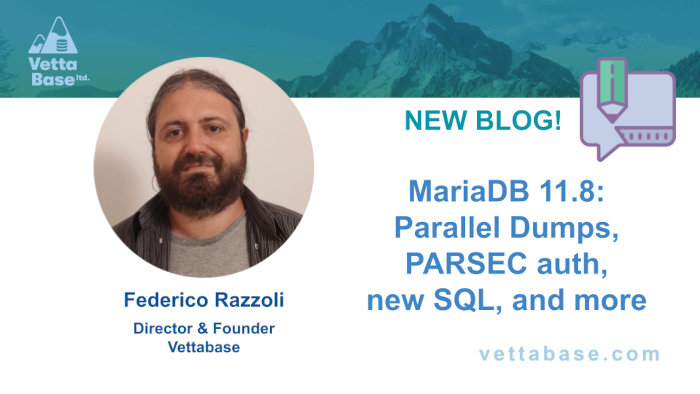I wrote two articles about correctly sizing InnoDB buffer pool: Is InnoDB Buffer Pool big enough? and Can we shrink InnoDB Buffer Pool?.
Aria is a MariaDB storage engine that is used for internal temporary tables and, potentially, tables created by the user. Its pagecache is the equivalent of InnoDB buffer pool, and this article is about sizing it properly. Note that to adjust the pagecache we need to change the value of aria_pagecache_buffer_size in the configuration file and restart MariaDB.

Should we really care about Aria?
All MariaDB users use Aria, but many of them don’t know that. Aria is used for:
- Some system tables;
- Internal temporary tables;
- Tables explicitly created with
ENGINE=Aria.
Rarely people create Aria tables explicitly. For other uses of Aria, the default size of the pagecache is usually big enough. Most of the times it could even be smaller, but it’s better to refrain from overoptimising.
Check your pagecache using the hints in this article. If your pagecache is clearly oversized (say, double of what it should be), consider shrinking it. If it’s undersized, definitely resize it. If you set its size manually, check if your choice was wise.
Checking the size of Aria Pagecache
Here I will describe the status variables that we want to check to verify if the pagecache is correctly sized. How to check them is up to you. I suggest to use a proper monitoring solution to see how these values evolve over time, and their spikes.
Unused blocks
The pagecache is made of blocks. Not all blocks should be used, a portion of them should always be free.
Compare Aria_pagecache_blocks_used with Aria_pagecache_blocks_unused. If unused blocks are close to zero, the pagecache needs to be larger. If unused blocks are consistently a big portion of the total,you can shrink the pagecache.
Pagecache efficiency
The purpose of the pagecache is to avoid having a high number of disk operations (reads and writes). If a lot of data are still being read from disk, the pagecache is not big enough. Compare Aria_pagecache_read_requests (the reads requested to Aria) with Aria_pagecache_reads (the number of reads that hit the disk because the desired data was not cached).
Flushed blocks
Look at Aria_pagecache_blocks_not_flushed. If, at any point in time, the number is high and it decreases suddenly, it means that Aria had to flush pages to make room for new data. This probably means that Aria cache is not big enough.
The MariaDB team has public JIRA projects. We can keep an eye on them to follow the development of new features and bug fixing. If you care about Aria Pagecache, the following tasks are important:
- MDEV-16606 – Make aria_pagecache_buffer_size dynamic
- MDEV-16607 – Consider smaller defaults for MyISAM and Aria cache sizes – Aria default could actually be increased, see the comments in the task.
- MDEV-25285 – aria_pagecache_buffer_size doc is wrong in one place
If you make massive use of Aria you may also care about this, but it’s much less likely to be implemented:
Finally, this task will make it possible to use something other than Aria for internal temporary tables:
About MyISAM
Aria was conceived as a modern, crash-safe MyISAM. These engines are similar in many respects.
MyISAM has a Key Cache, which is almost equivalent to Aria Pagecache. The big difference is that, while the Pagecache stores both indexes and data, the Key Cache only stores indexes. For each Aria status variable mentioned in this article, there is an equivalent MyISAM variable that gives us some information about the Key Cache.
If you use MyISAM on purpose, consider using InnoDB instead. There aren’t many good reasons to choose MyISAM nowadays. That said, if you use MyISAM for a good reason, check if you can use Aria instead. It’s very possible you can’t, because Aria is sensibly slower on write. But as a general rule… the least storage engines you use in the same server, the better.
Conclusions
We discussed the methods I know to check if Aria pagecache is reasonably sized. However, don’t spend too much time on this. You surely should enlarge the pagecache if it is not big enough, but that’s not a common situation. If it’s heavily oversized, shrinking it could also make sense to save resources and improve performance. But normally it’s not worth the effort.
For a complete review of your MariaDB configuration, consider our MariaDB Health Checks.
Federico






0 Comments